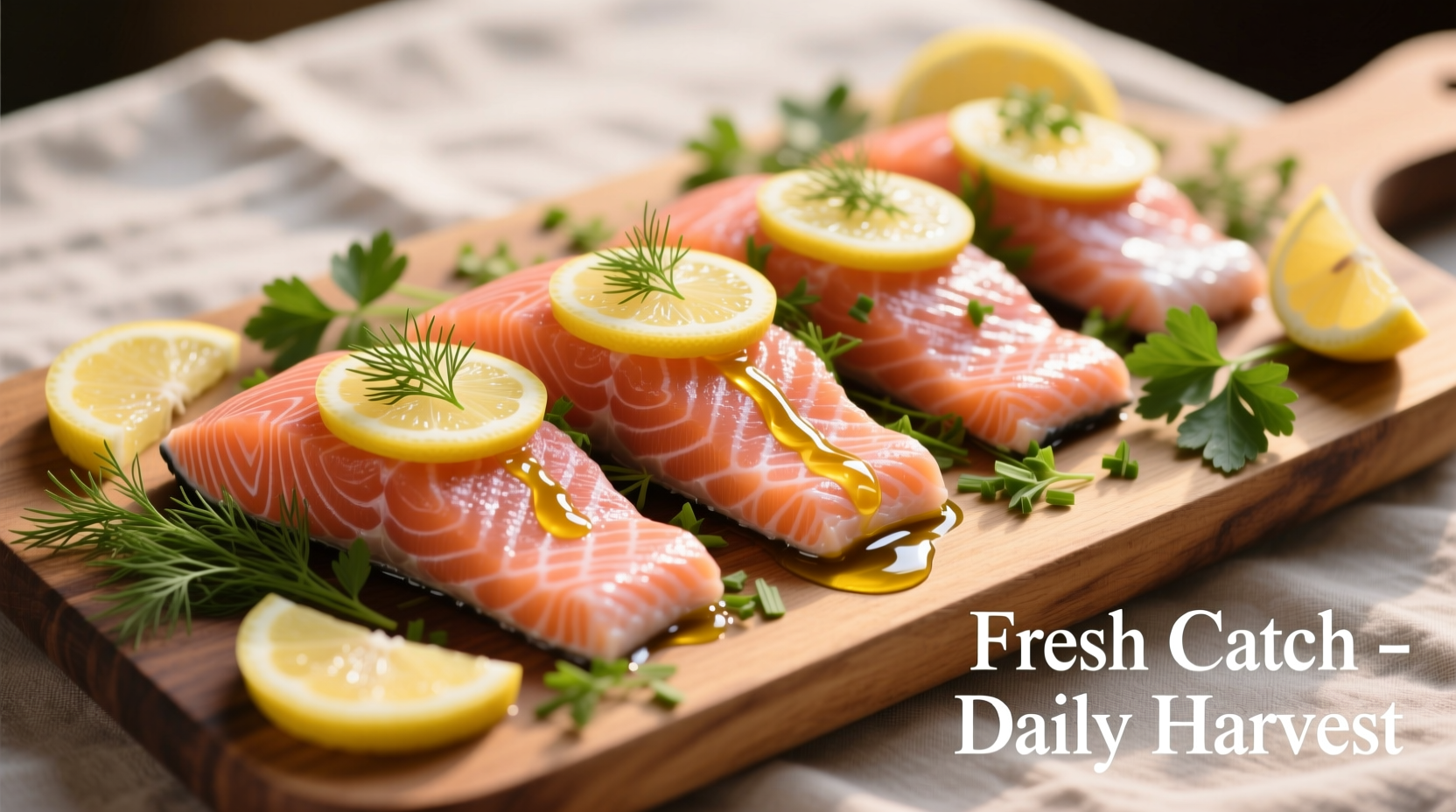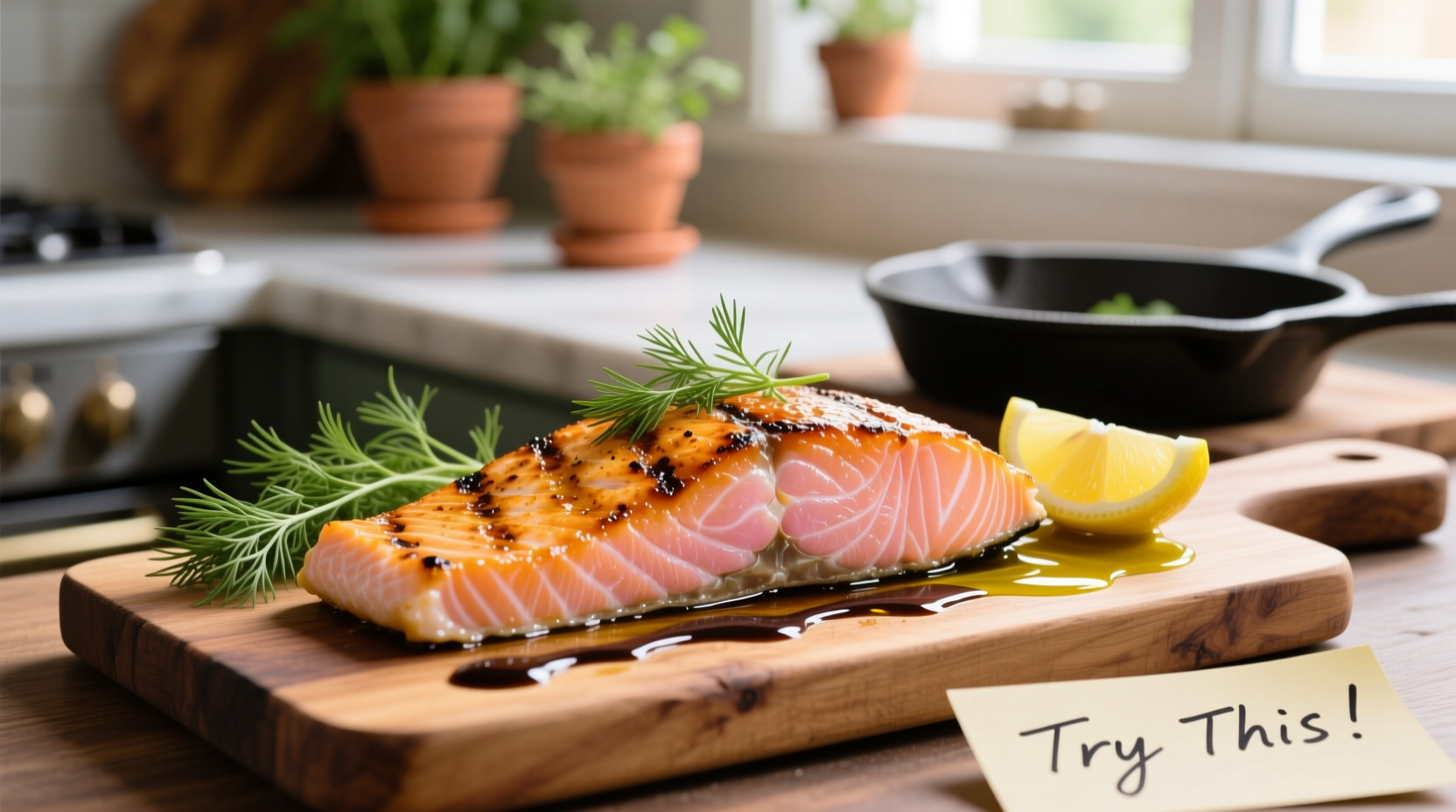When wondering what to cook with salmon, the best options include baked salmon with lemon-dill sauce, pan-seared salmon with garlic butter, salmon burgers, salmon pasta, and salmon salad. These dishes provide balanced nutrition, cook in 30 minutes or less, and work for weeknight dinners or special occasions. Each preparation method maintains salmon's rich omega-3 content while delivering exceptional flavor.
Discovering what to cook with salmon transforms this versatile fish into meals that satisfy both nutritional needs and culinary desires. Whether you're a busy professional needing quick salmon dinner ideas for weeknights or a home cook exploring healthy salmon meals ready in 30 minutes, salmon adapts beautifully to your schedule and skill level. Our guide provides professional chef-tested approaches that guarantee moist, flavorful results every time—no more dry, overcooked fish.
Salmon Cooking Solutions Based on Your Time Constraints
Understanding your available time helps determine what to cook with salmon most effectively. Professional kitchens use time-based frameworks to match ingredients with appropriate preparations—here's how to apply this approach at home.
| Time Available | Best Salmon Preparation | Key Benefit |
|---|---|---|
| Under 15 minutes | Pan-seared salmon with lemon-caper sauce | Restaurant-quality results with minimal cleanup |
| 15-30 minutes | Sheet pan salmon with roasted vegetables | Complete meal with balanced nutrition |
| 30-60 minutes | Salmon en papillote with seasonal produce | Flavor infusion without drying out fish |
| Meal prep (2+ hours) | Salmon patties with fresh herbs | Multiple meals from single preparation |
Mastering Essential Salmon Cooking Methods
Professional chefs rely on specific techniques to maximize salmon's potential. These salmon recipes for beginners deliver consistent results while building fundamental cooking skills.
Pan-Seared Perfection: The Weeknight Savior
When time matters most, pan-searing delivers exceptional flavor with minimal effort. For perfect results:
- Dry salmon thoroughly with paper towels before cooking
- Heat oil until shimmering but not smoking (medium-high heat)
- Place skin-side down first for crispy texture
- Cook 4-6 minutes per side depending on thickness
- Finish with lemon juice and fresh herbs
This method creates the ideal pan seared salmon with lemon and herbs that works for casual weeknights or impressing guests. The USDA Food Safety and Inspection Service confirms that salmon reaches safe internal temperature (145°F) when cooked to flaky perfection.
Baking: Hands-Off Excellence
Baking salmon requires minimal attention while delivering reliable results. For best outcomes:
- Preheat oven to 400°F for even cooking
- Place salmon on parchment-lined baking sheet
- Add 1-2 tablespoons of liquid (broth, citrus juice) to prevent drying
- Cook 12-15 minutes for 1-inch thick fillets
- Check doneness with fork at thickest part
This approach creates perfect baked salmon recipes with vegetables when arranged with seasonal produce. The American Heart Association recommends baking as one of the healthiest cooking methods for preserving omega-3 fatty acids in fish.

Salmon Flavor Pairing Science
Understanding flavor chemistry transforms what to cook with salmon from random experimentation to intentional deliciousness. Salmon's rich, fatty profile pairs exceptionally well with specific flavor components:
- Acids: Lemon, lime, and vinegar cut through richness (try preserved lemon in Mediterranean recipes)
- Herbs: Dill, tarragon, and chives complement without overpowering
- Umami boosters: Miso paste, capers, and mushrooms deepen flavor complexity
- Sweet elements: Maple syrup, honey, or fruit preserves balance savory notes
According to culinary research from the Culinary Institute of America, salmon's fatty acid profile interacts particularly well with citrus compounds, creating flavor harmony that satisfies the palate. This explains why salmon with lemon-dill sauce remains a classic combination across culinary traditions.
Salmon Meal Frameworks for Every Occasion
Move beyond basic recipes with these adaptable meal frameworks that answer what to cook with salmon for specific dining scenarios.
Weeknight Warrior: 20-Minute Salmon Solutions
For quick salmon dinner ideas for busy families, follow this reliable formula:
- Cook grain base (quinoa, rice, or couscous)
- Prepare quick-cooking vegetable (asparagus, green beans)
- Pan-sear salmon with simple seasoning
- Combine components with fresh herb drizzle
This approach delivers complete healthy salmon meals ready in 30 minutes with minimal cleanup. The Academy of Nutrition and Dietetics confirms that this balanced plate approach provides optimal nutrition while satisfying family taste preferences.
Entertaining Elegance: Impressive Yet Simple
When hosting guests, elevate your salmon presentation with these professional touches:
- Use fresh herb sprigs as edible garnish
- Create sauce swirls with squeeze bottle
- Stack components vertically for visual interest
- Serve on warm plates to maintain temperature
These techniques transform simple salmon recipes for beginners into restaurant-worthy presentations without additional cooking time.
Avoiding Common Salmon Mistakes
Even experienced cooks make these critical errors when preparing salmon. Understanding these pitfalls ensures perfect results:
The Overcooking Trap
Salmon continues cooking after removal from heat (carryover cooking). Remove salmon from heat source when it reaches 135-140°F internal temperature—the USDA recommends 145°F as safe minimum, but carryover cooking will bring it to perfect doneness. Use an instant-read thermometer for accuracy.
The Marinade Misstep
Acidic marinades (lemon, vinegar) begin "cooking" salmon through ceviche-like reactions. Limit acidic marinades to 30 minutes maximum. For longer flavor infusion, use oil-based marinades with herbs and spices.
Salmon Storage and Preparation Guidelines
Proper handling ensures your salmon delivers optimal flavor and safety:
- Refrigerate immediately upon purchase (below 40°F)
- Cook within 1-2 days of purchase for best quality
- Thaw frozen salmon in refrigerator overnight
- Bring to room temperature 15-20 minutes before cooking
- Pat completely dry before seasoning
The FDA's Food Code provides these safety guidelines to prevent foodborne illness while maintaining quality. Following these steps ensures your salmon meal prep ideas for the week remain both delicious and safe.
Salmon's Culinary Evolution Timeline
Understanding salmon's cooking history reveals why certain preparations work best today:
| Era | Cooking Method | Modern Application |
|---|---|---|
| Ancient Times | Open-fire grilling with minimal seasoning | Simple grilled salmon with salt and pepper |
| Medieval Europe | Preservation through smoking and salting | Smoked salmon applications in modern cuisine |
| 19th Century | Boiling with minimal flavor additions | Poached salmon in court bouillon |
| Mid-20th Century | Baking with heavy sauces and breadcrumbs | Creamy baked salmon dishes |
| Modern Era | Precise temperature control and flavor layering | Sous vide and carefully balanced flavor profiles |
This culinary evolution shows how our understanding of what to cook with salmon has progressed from basic preservation to sophisticated flavor development. Contemporary techniques combine historical wisdom with modern food science for optimal results.
Contextual Considerations for Salmon Dishes
Certain salmon preparations work better in specific contexts. Understanding these boundaries helps you choose the right approach:
- Hot weather cooking: Opt for cold preparations like salmon salad or ceviche-style dishes to avoid heating the kitchen
- Meal prep constraints: Choose salmon burgers or patties that reheat well rather than delicate fillets
- Dietary restrictions: For low-sodium diets, use citrus and herb marinades instead of soy-based sauces
- Equipment limitations: Without an oven, focus on stovetop or microwave-friendly salmon recipes
These contextual considerations ensure your salmon meal prep ideas for the week align with your specific circumstances for stress-free cooking success.
Expanding Your Salmon Repertoire
Once you've mastered basic preparations, explore these creative directions for what to cook with salmon:
Breakfast Transformations
Leftover salmon shines in morning meals:
- Salmon frittata with asparagus and goat cheese
- Smoked salmon avocado toast with everything seasoning
- Salmon hash with potatoes and bell peppers
Global Flavor Adventures
Take your salmon on a world tour with these international preparations:
- Japanese-inspired miso-glazed salmon
- Mediterranean salmon with olives and tomatoes
- Mexican-style salmon tacos with avocado salsa
- Scandinavian gravlax with dill and sugar cure
These salmon recipes for beginners introduce global flavors while building fundamental cooking techniques applicable to many ingredients.
Essential Tools for Salmon Success
You don't need professional equipment, but these tools make what to cook with salmon significantly easier:
- Instant-read thermometer (critical for perfect doneness)
- Fish spatula (thin, flexible design for delicate handling)
- Cast iron or stainless steel skillet (for superior searing)
- Parchment paper (for easy cleanup and en papillote cooking)
According to Cook's Illustrated testing, an instant-read thermometer pays for itself in saved ingredients by preventing overcooking—the most common salmon mistake among home cooks.
Building Complete Meals Around Salmon
The question of what to cook with salmon extends to complementary sides that create balanced meals:
Perfect Pairings Framework
Create restaurant-quality plates using this simple formula:
- 1 protein component (your salmon preparation)
- 1 starch element (grain, potato, or legume)
- 2 vegetable components (1 cooked, 1 raw or lightly dressed)
- 1 sauce or dressing (ties elements together)
This approach ensures your salmon dinner ideas deliver complete nutrition while satisfying all taste preferences at the table. The Harvard T.H. Chan School of Public Health recommends this balanced plate method for optimal health outcomes.
FAQs About Cooking With Salmon
Frequently Asked Questions
How do I know when salmon is perfectly cooked?
Salmon is done when it reaches 145°F internal temperature at its thickest point, flakes easily with a fork, and appears opaque throughout. For medium-rare preference, remove from heat at 125°F as carryover cooking will continue the process. The USDA Food Safety and Inspection Service confirms 145°F as the safe minimum internal temperature for fish.
What are the best side dishes to serve with salmon?
The best side dishes create balance: roasted asparagus or green beans provide freshness, lemon-dill rice or quinoa offer complementary starch, and a simple arugula salad with lemon vinaigrette adds brightness. For best side dishes to serve with salmon, choose preparations that contrast salmon's richness without overwhelming its delicate flavor.
Can I use frozen salmon for these recipes?
Yes, frozen salmon works well in most recipes when properly thawed. Place sealed package in cold water for 30-60 minutes or thaw overnight in the refrigerator. Avoid microwave thawing as it creates uneven texture. According to Seafood Health Facts from Cornell University, properly frozen salmon maintains quality for 6-9 months when stored at 0°F or below.
How can I prevent salmon from sticking to the pan?
Ensure your cooking surface is properly preheated before adding oil, then heat the oil until shimmering. Pat salmon completely dry and place skin-side down first. Wait until it naturally releases from the pan before attempting to flip—this usually takes 4-5 minutes. Professional chefs follow this sequence: hot pan, oil, then food, never reversing the order.











 浙公网安备
33010002000092号
浙公网安备
33010002000092号 浙B2-20120091-4
浙B2-20120091-4